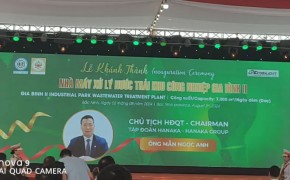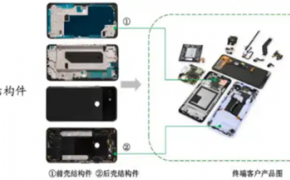6月12日ST爱康(002610)发布公告称,公司及实控人邹承慧因涉嫌信息披露违法违规被中国证监会立案。6月13日ST爱康开盘跌停,达到连续第28个交易日跌停。ST爱康最新股价为0.43元/股,连续17个交易日低于1元/股,已经锁定“面值退市”。
在此之前,ST爱康曾发布产能清仓式停产。6月7日晚,ST爱康(002610)公告,公司控股子公司赣州爱康光电、浙江爱康光电、湖州爱康光电拟对公司高效太阳能电池组件生产线实施临时停工停产,停产时间自6月8日起,预计停产时间不超过3个月,后续复产情况将及时披露。
据有关媒体报道,在ST爱康发布停产公告之后,公司有些部门已经人去楼空。
在上个月的投资机构调研活动中,ST爱康表示公司第一季度营业收入下降和亏损主要是因为行业组件价格持续降低和电池技术路线由P型转向N型的冲击所致。ST爱康称去年组件产品价格持续下跌,并在第三、四季度大幅下跌,严重影响了公司产品销售收入和毛利,部分订单销售价格和成本倒挂,也导致公司在报告期末计提的存货跌价准备增加。且由于N型技术产品快速迭代,行业产能面临结构性调整,公司为应对市场的剧烈变化对现有产线进行技术升级改造,过程中处置了部分组件设备,并于报告期末对PERC电池、组件线计提资产减值损失。
另外公司去年继续推进光伏电站出售工作,以优化资产负债结构,改善企业现金流,公司转让了原控股电站公司出售后的剩余少数股权。由于该电站公司股权在转让控制权后账面已按公允价值确认并在后续持有期间按权益法确认了投资收益,同时受电站资产市场波动和承担合规消缺等因素影响,对公司损益有一定的影响。计提处置了技术落后的P型电池组件的设备产能、遵循会计政策对存货计提跌价准备、对应收账款计提坏账准备,对长期股权投资计提减值准备合计约4.55亿元,综合导致公司年度亏损。
ST爱康曾是行业HJT异质构光伏的明星企业,2022年还在宣传自己发布700W+的210异质结组件采用120μm厚度以下的210尺寸N型半片硅片、0BB无主栅技术,能够大幅降低异质结电池的银耗和硅成本,同时其最新异质结组件具备-0.24%/℃的低温度系数、大于90%的高双面率、无PID、LID衰减,首年过后衰减仅为-0.25%/年等特点,高度适配地面大型电站。根据实证电站数据,HJT组件可带来6.77%生命周期的发电量增益,同时高转换效率推动土地、支架等BOS成本降幅达8.35%,实现LCOE体系下的领先。
在这次调研活动中,ST爱康仍表示公司聚焦异质结技术,进一步升级电池产线,在光伏行业P型向N型技术升级迭代的新一轮竞争中,有望凭借产能结构优势,持续获得有利市场竞争地位。截至目前,公司管理团队和经营团队稳定,主业业务按规划有序开展,在手订单量充足,债权债务正常履约。因此管理层坚信公司在新的经营年度及未来发展中的持续经营能力不存在问题。
导致ST爱康崩盘的原因是6月4日,其董事长曾公开表示公司无ST风险,ST爱康因信披违规而收警示函。警示函指出,ST爱康在深交所互动易回答投资者关于“公司是否有ST风险”提问时,直接回复“目前公司不存在被ST的风险”,未充分向投资者披露公司生产经营风险和内部控制风险,相关回复不准确、不完整。
根据ST爱康2021年、2022年、2023年年度报告,该公司三年经审计的归母净利润分别为亏损4.06亿元、亏损8.34亿元和亏损8.26亿元,扣非净利润分别为亏损5.40亿元、亏损6.95亿元和亏损7.45亿元,均为负值。
同时,该公司年度审计会计师事务所对公司2023年度财务报告出具了保留意见与持续经营相关的重大不确定性说明段的审计报告,对ST爱康2023年度内部控制出具否定意见审计报告。浙江证监局认为,ST爱康未充分向投资者披露公司生产经营风险和内部控制风险,相关回复不准确、不完整。公司上述行为违反了有关规定。公司董事长邹承慧(代行董秘职责)、董事兼高级副总裁田野也违反了有关规定,对上述行为承担主要责任。据此,浙江监管局决定对ST爱康分别采取出具警示函的监督管理措施,并记入证券期货市场诚信档案。
On June 12, ST iKang (002610) announced that the company and its actual controller Zou Chenghui were filed by the China Securities Regulatory Commission on suspicion of illegal information disclosure. On June 13, ST iKang opened with a down limit, reaching the 28th consecutive trading day down limit. The latest stock price of ST iKang is 0.43 yuan/share, which has been lower than 1 yuan/share for 17 consecutive trading days, and has been locked in the "par value delisting".
Prior to this, ST Akcome had announced a clearance shutdown of production capacity. On the evening of June 7, ST Akcome (002610) announced that the company's holding subsidiaries Ganzhou Akcome Optoelectronics, Zhejiang Akcome Optoelectronics, and Huzhou Akcome Optoelectronics plan to temporarily suspend the company's high-efficiency solar cell module production line, and the shutdown time will start from June 8, and the shutdown time is expected to be no more than 3 months, and the follow-up resumption of production will be disclosed in a timely manner.
According to relevant media reports, after ST Akcome issued an announcement on the suspension of production, some departments of the company have been emptied.
In a survey conducted by investment institutions last month, ST iKang said that the company's operating income and loss in the first quarter were mainly due to the continuous decline in module prices in the industry and the impact of the shift from P-type to N-type battery technology. ST iKang said that module prices continued to fall last year, and fell sharply in the third and fourth quarters, which seriously affected the company's product sales revenue and gross profit, and the inversion of the selling prices and costs of some orders also led to an increase in the company's provision for inventory decline at the end of the reporting period. In addition, due to the rapid iteration of N-type technology products and the structural adjustment of industry production capacity, the company carried out technical upgrading and transformation of the existing production line in response to the drastic changes in the market, disposed of some module equipment in the process, and made asset impairment losses on PERC cells and module lines at the end of the reporting period.
In addition, the company continued to promote the sale of photovoltaic power plants last year to optimize the asset-liability structure and improve the cash flow of the enterprise, and the company transferred the remaining minority stake after the sale of the original holding power station company. Since the equity of the power plant company has been recognized at fair value after the transfer of control, and the investment income has been recognized according to the equity method during the subsequent holding period, and at the same time, it has a certain impact on the company's profit and loss due to factors such as market fluctuations in power station assets and the elimination of compliance with regulations. The provision for the disposal of equipment production capacity of technologically backward P-type cell modules, the provision for inventory price decline in accordance with accounting policies, the provision for bad debts on accounts receivable, and the provision for impairment of long-term equity investment totaled about 455 million yuan, which comprehensively led to the company's annual loss.
In 2022, ST iKang is also promoting its release of 700W+ 210 heterojunction modules, which use 210 size N-type half-cell silicon wafers with a thickness of less than 120μm and 0BB busbarless technology, which can greatly reduce the silver consumption of heterojunction cellsAt the same time, its latest heterojunction modules have a low temperature coefficient of -0.24%/°C, a high bifaciality of more than 90%, no PID and LID attenuation, and the attenuation after the first year is only -0.25%/year, which is highly suitable for large-scale ground power stations. According to the empirical power station data, HJT modules can bring 6.77% life cycle power generation gain, and the high conversion efficiency can reduce the cost of BOS such as land and brackets by 8.35%, achieving the leading position under the LCOE system.
In this research activity, ST iKang still said that the company focuses on heterojunction technology, further upgrades the battery production line, and is expected to continue to gain a favorable market competitive position by virtue of its capacity structure advantage in the new round of competition from P-type to N-type technology upgrade and iteration in the photovoltaic industry. Up to now, the company's management team and management team are stable, the main business is carried out in an orderly manner according to the plan, the number of orders in hand is sufficient, and the creditor's rights and debts are performed normally. Therefore, the management is confident that there is no question about the company's ability to continue as a going concern in the new business year and beyond.
The reason for the collapse of ST iKang was that on June 4, its chairman publicly stated that the company had no ST risk, and ST iKang received a warning letter due to the violation of information disclosure. The warning letter pointed out that when ST iKang answered investors' questions about "whether the company has ST risks" on the Shenzhen Stock Exchange, it directly replied that "at present, the company does not have the risk of being ST", and did not fully disclose the company's production and operation risks and internal control risks to investors, and the relevant replies were inaccurate and incomplete.
According to ST iKang's 2021, 2022 and 2023 annual reports, the company's three-year audited net profit attributable to the parent company was a loss of 406 million yuan, a loss of 834 million yuan and a loss of 826 million yuan, respectively, and a loss of 540 million yuan, a loss of 695 million yuan and a loss of 745 million yuan respectively, all of which were negative.
At the same time, the company's annual audit accounting firm issued an audit report on the company's 2023 financial report with a qualified opinion on the material uncertainty statement related to continuing operations, and issued a negative audit report on ST iKang's internal control in 2023. The Zhejiang Securities Regulatory Bureau believes that ST iKang did not fully disclose the company's production and operation risks and internal control risks to investors, and the relevant responses were inaccurate and incomplete. The above behavior of the company violates the relevant regulations. Zou Chenghui, chairman of the board of directors (acting secretary of the board of directors), and Tian Ye, director and senior vice president of the company, also violated the relevant regulations and assumed primary responsibility for the above acts. Accordingly, the Zhejiang Regulatory Bureau decided to take supervision and management measures to issue warning letters to ST iKang, and recorded them in the integrity file of the securities and futures market.








